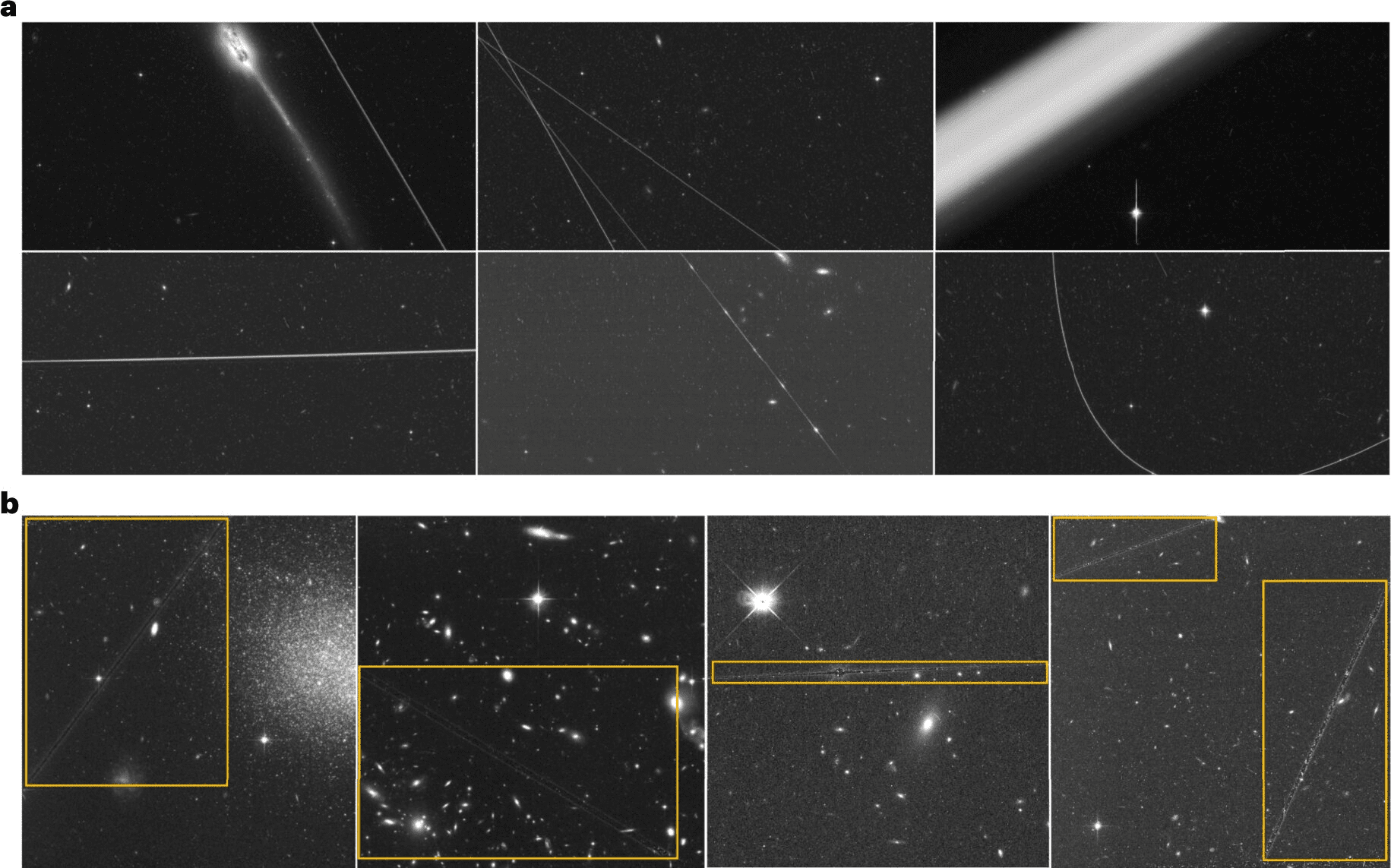A study of images taken by the Hubble Space Telescope finds that more than one in 40 are crossed by satellite trails. In some cases these interfere with the science, wasting the exceptionally valuable time spent taking the image. Although the affected proportion is small, it’s growing, refuting the claim we can solve the problems satellites are causing for astronomers by putting the large telescopes in space.
Spotting a satellite was once rare enough to be an exciting addition to a night under the stars away from the city lights. Today, it’s become an annoying impediment to enjoying the beauty of everything else. It’s not only wrong to wish on space hardware, if you start you’ll never do anything else.
For astronomers the problem is not just a loss of beauty. It’s becoming increasingly common for satellite trails to destroy images, often ruining time precious time a scientist had to fight hard to get and holding up important research. Although this issue is getting considerable attention, a new paper in Nature Astronomy addresses an aspect that has been largely ignored.
Elon Musk, among others, has responded to concerns about satellites’ effect on astronomy by saying, “We need to move telescopes to orbit anyway”, but that’s not necessarily a complete solution.
The Hubble Space Telescope orbits at 540 kilometers (340 miles), which is above the majority of objects humanity has put in orbit, but there are 8,460 objects more than 10 centimeters (4 inches) across above it. A team led by Dr Sandor Kruk of the Max Planck Institute for Extraterrestrial Physics recruited citizen scientists through the Hubble Asteroid Hunter project, to study Hubble’s archive from 2002 to 2021 and distinguish satellite trails from asteroids. Algorithms were trained on the volunteers’ results to identify satellite trails in further images.
Exposure times averaged 11 minutes and 2.7 percent of these had a satellite trail. Inevitably the chance of a trail increased for longer exposures and wide fields. The filters used also affected the rate, with images taken using green and red filters most likely to be photobombed, while ultraviolet-filtered images barely suffered at all.

The authors express particular concern for the planned Xuntian wide-field telescope to be hosted on the Tiangong Space Station.
After Musk’s initial dismissiveness, Starlink has attempted to address the problem, and other fleets of satellites may do the same. Nevertheless, solutions to interference with ground-based telescopes are not easy, particularly when collisions cause satellites to break up.
One obvious solution is to place space telescopes higher, putting ever more satellites behind them. This isn’t the reason the JWST was placed at L2, but it’s a useful bonus. Unfortunately, however, the higher an instrument is, the harder it is to refuel and repair. The correction of Hubble’s primary mirror would have been impossible if it had been in the JWST’s orbit, as would the maintenance missions that have extended its life.
Moreover, a sort of arms race could start with objects being placed in higher and higher orbits to get above each other.
Algorithms to remove satellite trails have been proposed and may help. However, one of the images the paper considers has four satellite trails; 133 have two. As multiple trails become more common there may be only so much that processing can do.
The paper is published open access in Nature Astronomy.
Source Link: Hubble In Trouble As Satellite Trails Start Affecting It Too